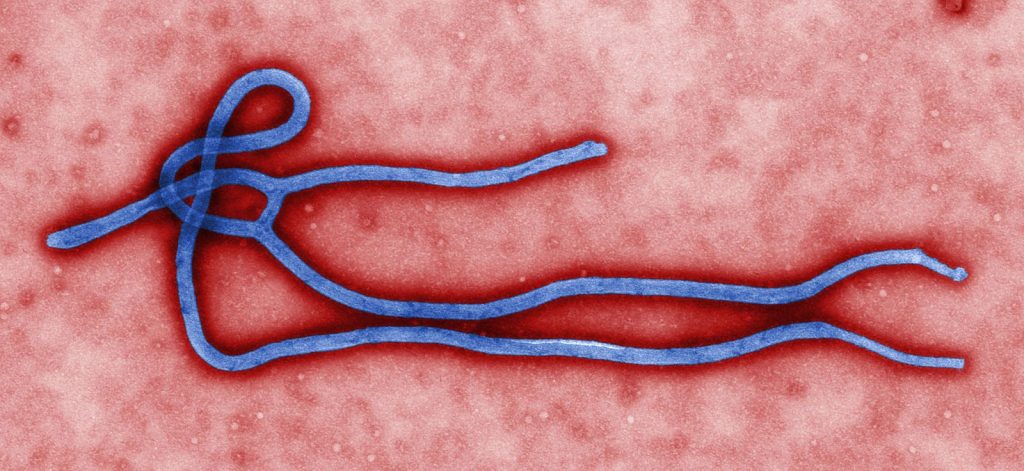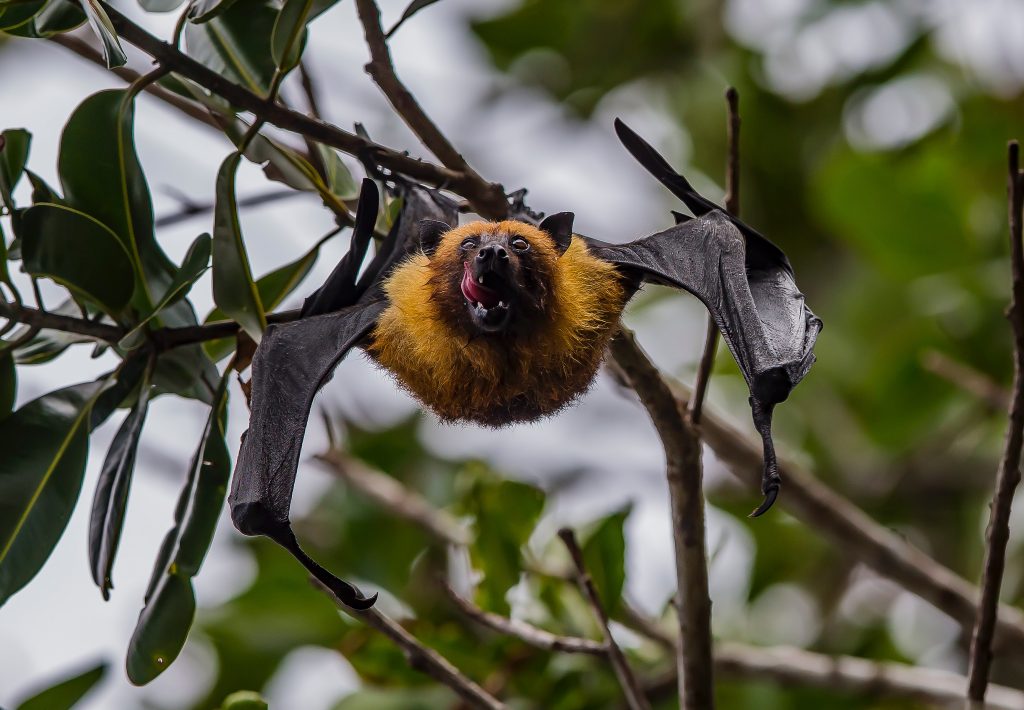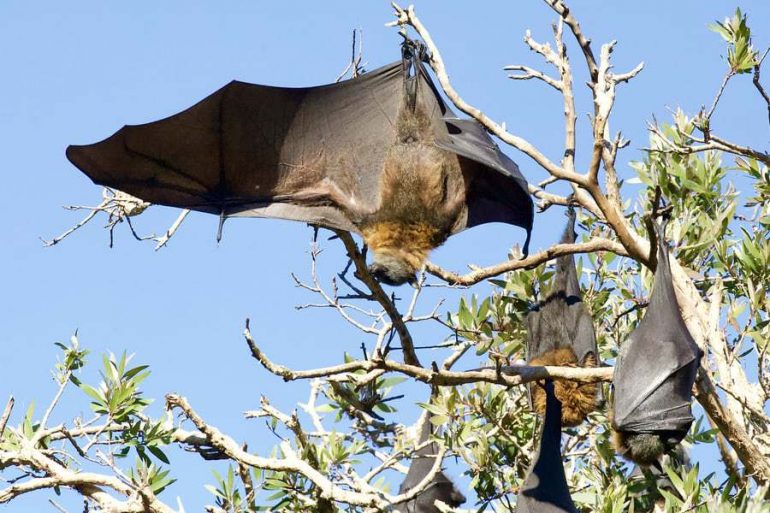COVID-19, Ebola, MERS, and SARS are all deadly viruses in the limelight of contemporary research that all have one thing in common—they are hypothesized to have originated from bats. Such types of viral diseases passed from animals to humans are known as zoonotic diseases and have long been the cause of epidemics all over the world. Bats in particular are considered responsible for harboring many of these life-threatening viruses. A diverse order of more than 1,400 species with different diets and habitats, bats have long lifespans relative to their body size and are observed to have low incidences of cancer and other diseases compared to their other mammalian counterparts. The resilience of bat immune systems has attracted the attention of numerous researchers looking to better understand how to control our own immune responses when they go haywire.

Bats do a uniquely good job at tolerating viral infections, armed with an immune system that prevents an excessive immune response from mounting even when inundated with a virus. Although viral levels in bats are high, they do not exhibit traditionally expected signs of disease, which has led scientists to conclude that their extremely high immune tolerance permits them to coexist with viruses. Even though bats remain relatively healthy by dampening their own inflammatory response instead of reducing viral loads, the high levels of harmful viruses they harbor can easily jump to other species.
So how do bats manage this immunological feat? Researchers have elucidated several biological mechanisms explaining this phenomenon. Several of these mechanisms are found in the innate immune response, which is considered to be the first line of defense against foreign agents invading a host organism. Normally, mammals express a family of sensor proteins known as pattern recognition receptors (PRRs) on the cell membrane. These PRRs recognize conserved biomarkers common to an invasive virus, bacteria, or fungi known as pathogen-associated molecular patterns (PAMPs). Examples of these conserved biomarkers include double stranded RNA which is alien to cellular organisms and present only in viruses, or surface glycoproteins that lie on the outer membrane of a bacteria or a viral protein shell. When activated by a PAMP, the PRR recruits effector proteins ranging from inflammatory cytokines to interferons which equip other uninfected cells in the body with the machinery to resist and fight viral infections. Notably, some of these downstream proteins promote inflammation in the body, which is the cause of symptoms for many diseases as the body’s immune system is overwhelmed.
To prevent this phenomenon, the bat immune system exhibits several differences from other mammalian systems. One such difference is that bats have a lower expression of a specific PRR known as NLRP3. NLRP3 recognizes a diverse array of PAMPs, including ones indicative of the MERS and SARS viruses, and is involved in activating signalling pathways that produce inflammatory cytokines. These inflammatory cytokines are responsible for promoting inflammation in response to a viral attack. However, a step in the synthesis of NLRP3 has a reduced occurrence in bats, and researchers have found mutations unique to bats that make this protein less active. As a result, bats have lowered levels of NLRP3 which translate to a lower downstream production of inflammatory cytokines. This lowered amount of inflammatory cytokines reduces the bat’s inflammatory response, decreasing the harmful symptoms viruses induce in other species such as fevers, lesions, and dilated blood vessels. Researchers have identified this phenomenon in both fruit bats and insect eating bats, suggesting that it is conserved throughout bat species regardless of diet.
Another key player in the innate immune response are interferons. These signalling proteins are secreted by cells in response to viral infection and generally create an antiviral response in neighboring cells, rendering them resistant to viral infection. Interferons create this antiviral resistance by activating the transcription of hundreds of genes known as interferon-stimulated genes, leading to the production of a wide variety of proteins. The functions of these proteins range from destroying cellular components that viruses hijack to breaking viral RNA–all with the goal of inhibiting viral replication.
Normally, mammals induce the production of interferons only when a foreign virus is detected in the organism. However, it has been found that some bat species continuously express interferon-α, a major type of interferon, causing the bat cells to have the same level of interferon-α with or without a viral infection. Therefore, bats already have higher levels of antiviral interferon-stimulated protein production in their cells prior to viral exposure, allowing them to mount a more rapid antiviral response than other mammals.
Currently, scientists are still investigating why the bat’s immune system is so different from that of the rest of the mammalian class. The most prominent hypothesis corresponds to another characteristic unique to bats: flight. Flying is a metabolically demanding action that can result in high body temperatures and increased DNA damage. It is possible that normal expression levels of pattern recognition receptors might over-activate the immune system in an attempt to fix the higher levels of bodily damage, so bats have developed a less hyperactive inflammatory response to combat this.

Studying these fascinating mammals does not come without its challenges. Since bats are not model organisms in the biological research field, there are few bat cell lines for researchers to work with and few bat-specific reagents and antibodies to use in experiments. Nevertheless, studying bat immunological pathways may lead to the development of viral and cancer therapies, a better understanding of aging mechanisms, and the creation of treatments against inflammatory diseases. Given modern globalization, the experience of COVID-19, and the possibility of another pandemic due to a zoonotic event, a greater urgency is felt to understand these unique pathways and learn from the bat’s impressive immune system.
Sources:
- https://www.nature.com/articles/s41586-020-03128-0
- https://www.ncbi.nlm.nih.gov/pmc/articles/PMC2668232/
- https://www.nature.com/articles/s41577-019-0165-0
- https://www.sciencedaily.com/releases/2019/02/190226112401.htm
- https://www.nature.com/articles/s41564-019-0371-3
- https://www.frontiersin.org/articles/10.3389/fimmu.2020.00026/full
- https://www.pnas.org/content/113/10/2696
